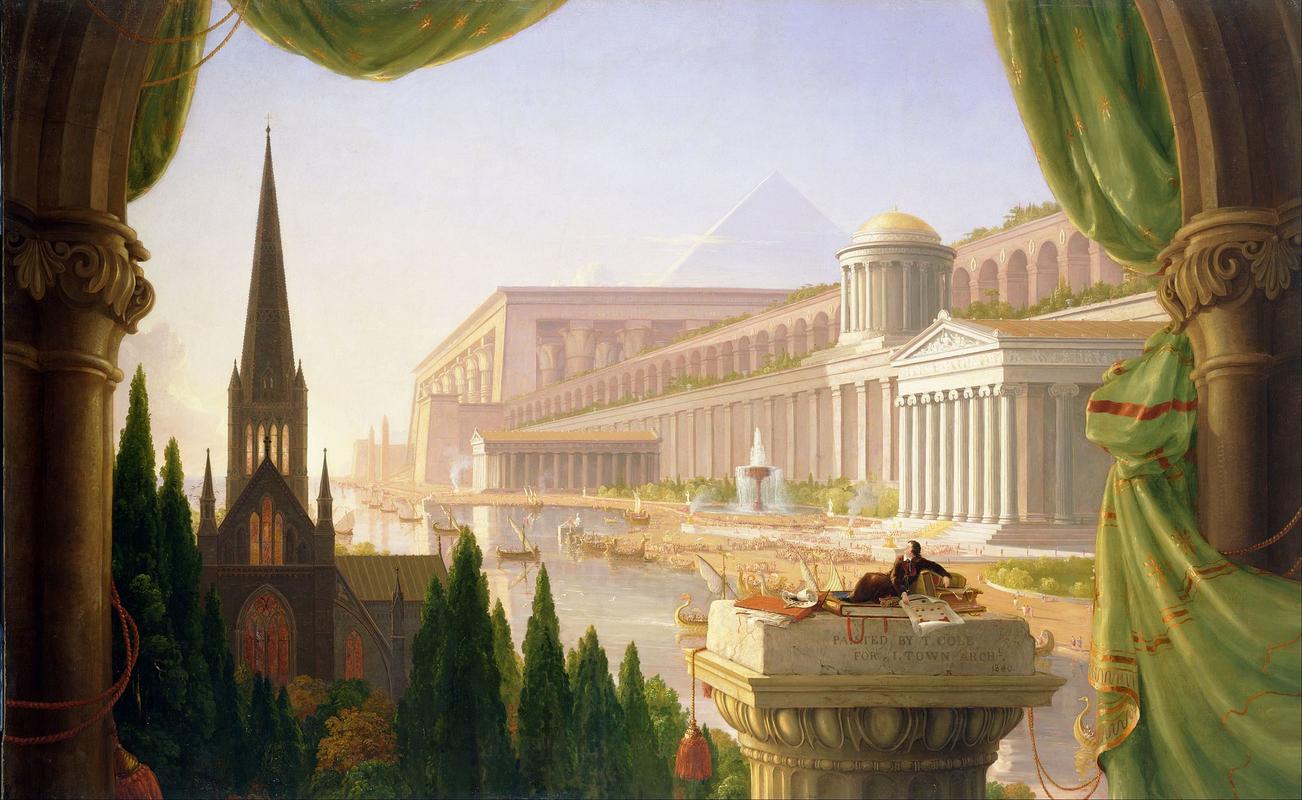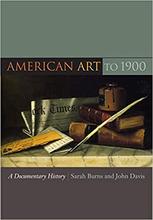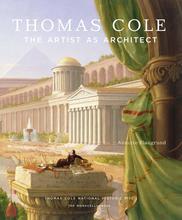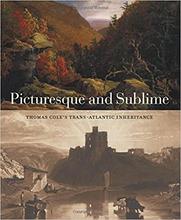Comments (9)

This is a beautiful example of a Neoclassical painting by Thomas Cole. He appears to have combined a Greek/Roman port with a European church/tree area, and a pyramid in the background sky. This is an example of neoclassical art because of the combination of the Ancient Greek/Roman port and pillars (specifically too the one the man is laying on), a pyramid in the background, and European church/area all in one painting (presumably all in the same area and not separate "worlds" if you will). I get the feeling Thomas Cole had a passion for all these areas due to the person lounging on a pillar with study material around him; taking his surroundings in.

I love the angle and perspective this painting is done! The structures with all the pillars and what looks to be like a church mesh together well in the photo because of the similarities. Neoclassical was referred to as something being simple and symmetrical. This painting has so much symmetry with all the straight architecture lines and buildings fitting together with their shape.

This is such a beautiful painting! You get to see the detail in the background even as the photo gets further back! It Is such an atmospheric photo!

The Artist does a great job at incorporating linear depth and time into this painting. It appears as though the style architecture gets newer as it gets closer to the viewer's perspective.

I like this perspective painting because it shows me how great the palace is, with the extended wall and the flickering mountain behind it. There's one person laying on the rock with the painter's name on it, which I think is interesting.

I really like the perspective in this painting. The painting has so much depth. We can see the curtains closely as we are looking out the window. I like how we can see the church is closer than the Greek temple style buildings, and they are closer than the mountain in the background. I believe this is a good use of one point perspective since things get smaller as they get farther away. I think the choice of colors was also very skillful in this painting. I like the very natural hues of green and white used. Space is also used very well in this painting so that the painting has many elements going on in it, yet it still is not too busy or overwhelming. I also like the line in the painting. I like how the lines of the Greek-temple looking building conveyed strength and sturdiness. These lines also created a texture of their own which I find interesting.

I think that this is a really beautiful painting and I love the different elements of architecture that are shown.

















Right away, I am taken back by the sheer scale of this painting. This painting is essentially a microcosm of what neoclassical architects sought to achieve with their creativity and skills within the coming years, or perhaps what they has simply dreamed of achieving. We can see a wide variety of buildings, most of which resemble those that were being created at the time, such as the roman style pillars and roofs, as well as a classic-style church. In the background, we can see a giant pyramid, not unlike the ones created by the Egyptians. From this, we can also infer that the Egyptians, with their dedication to creating large structures and leaving their own mark on art and history, may have served as an inspiration to the people and architects of the neoclassical era.